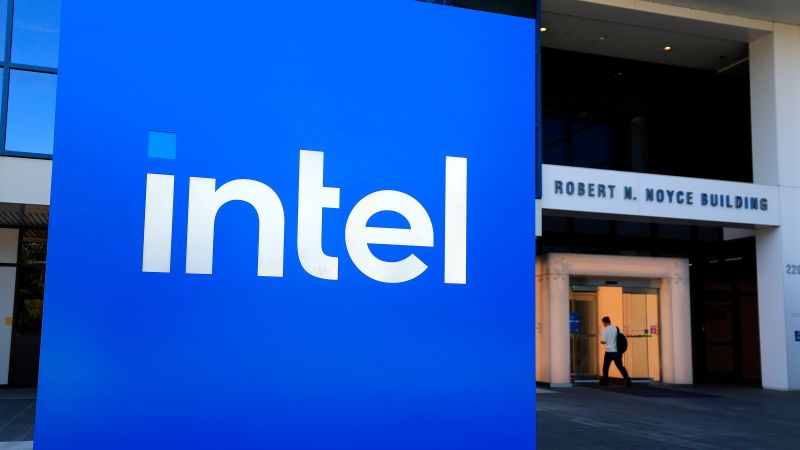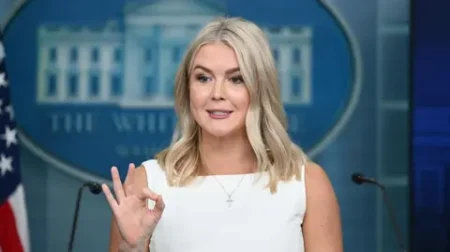In a notable turn of events, the Trump administration is reportedly contemplating a substantial financial intervention in the beleaguered tech giant, Intel. Once positioned as a cornerstone of American technological prowess, Intel has faced significant challenges in recent years, prompting discussions of an unprecedented partnership with the government. According to Bloomberg, these talks were catalyzed by a recent meeting between President Donald Trump and Intel’s CEO, Lip-Bu Tan. The specifics of such a deal are still being refined, but the concept involves the U.S. government potentially acquiring an equity stake in Intel—a move that could signify a transformative shift in how governmental and corporate relationships are structured in the tech sector.
During the meeting, which has been characterized as “very interesting” by Trump, both parties engaged in candid dialogue about the dire state of Intel and its strategic ambitions moving forward. The government’s interest in bolstering Intel aligns with its broader objectives of revitalizing domestic manufacturing, particularly in critical segments such as semiconductors and artificial intelligence technology. Reports suggest that Intel’s manufacturing facility plans in Ohio have faced numerous delays, and the U.S. government’s involvement could inject much-needed support and resources.
The possible investment could offer Intel a lifeline as it struggles to regain its competitive footing against rivals who have adeptly navigated recent technological advancements. Following the initial revelations regarding these talks, Intel’s stock price surged by more than 7%, reflecting heightened investor optimism in the wake of potential government support. Industry analysts indicate that should the deal materialize, it could pioneer pathways for similar government investments in other vital sectors, reinforcing the administration’s campaign promise to bolster the domestic manufacturing landscape.
Despite the optimism, it is crucial to note that any discussions surrounding the deal remain speculative. White House spokesperson Kush Desai articulated this sentiment, urging caution around assumptions until formal announcements are made. Indeed, the nature of talks and negotiations in the public sphere can often lead to inflated expectations, and businesses like Intel remain wary of commenting on rumor without solidified details. An official from Intel, while refraining from addressing the specifics of the reports, reaffirmed the company’s commitment to collaborating with the administration to achieve mutual goals of fostering U.S. technology and manufacturing leadership.
In the aftermath of the meeting, President Trump also seemed to express confidence in Tan and his leadership, which comes off the heels of the CEO’s tumultuous tenure marked by pressure regarding alleged ties to China that led Trump to demand Tan’s resignation. The cabinet continues to expect Intel, like other companies, to provide actionable suggestions for the strategic alignment of corporate efforts with national interests.
Intel, which appointed Tan as its new leader in March, is under significant stress as it attempts to pivot the company. Recent announcements indicate that Tan plans to cut about 15% of Intel’s workforce as part of operational improvements aimed at rectifying the company’s diminishing market status. This effort illustrates both the urgency and scale of the challenge faced as the organization strives to transform and regain its relevance in an increasingly competitive semiconductor landscape.
This potential deal is not isolated; the Trump administration has initiated unique partnerships with other American companies recently. For instance, MP Materials, a firm involved in rare-earth materials, has engaged in a multibillion-dollar investment framework supported by the U.S. Department of Defense. Similarly, industry leaders from AMD and Nvidia have entered agreements to allocate a portion of their revenue back to the government for resumed export operations in China, showcasing a growing pattern where corporate and governmental objectives increasingly align for mutual benefit.
In summary, the prospect of government investment in Intel is illustrative of a broader strategy the Trump administration appears to be employing—one that seeks to take active steps in reshaping American corporate dynamics, particularly in pivotal industries like technology and manufacturing. As these negotiations unfold, industry stakeholders are left waiting to see what the implications will be not only for Intel but for technology companies throughout the United States, potentially marking a new chapter in public-private partnerships.











